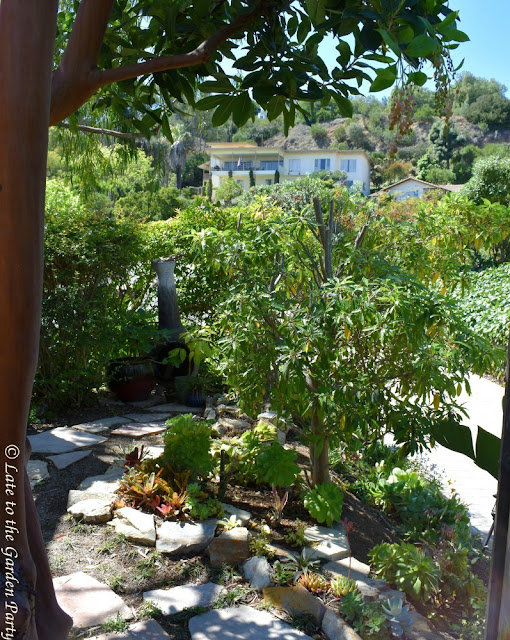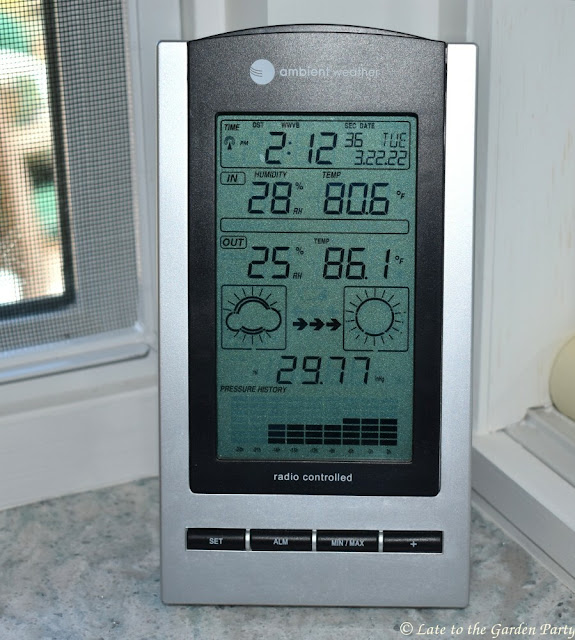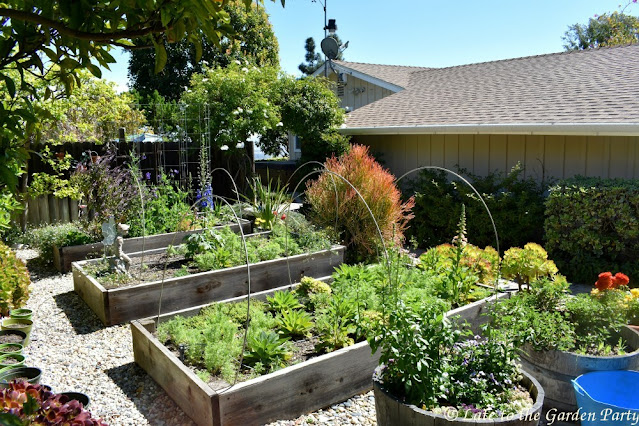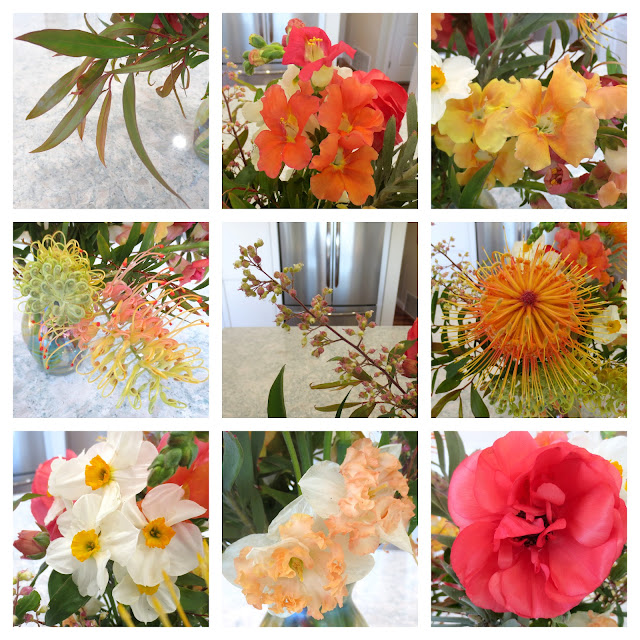The time has come to deal with the Euphorbia tirucalli 'Sticks on Fire' in my cutting garden. It's a colorful attention-grabber but it's out of control and my efforts to prune it into submission have only made things worse.
 |
| Photo taken yesterday |
 |
| You can barely tell that it's growing out of a strawberry pot |
It started as a small plant in what was originally a vegetable garden.
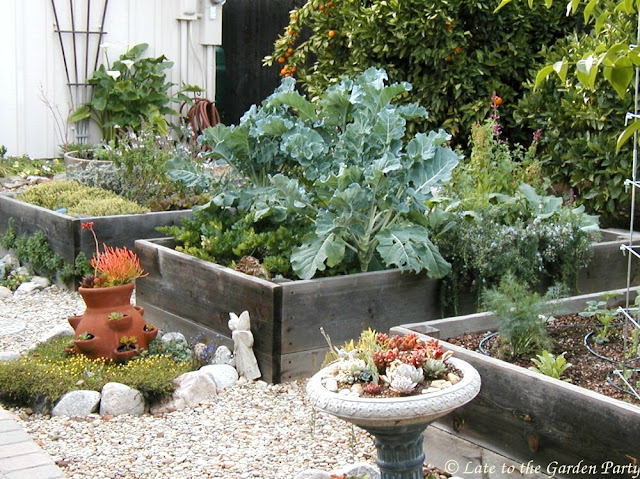 |
| This photo was taken early in 2012 after I'd planted my first vegetable garden in the raised planters that came with the property we acquired in December 2010 |
 |
| In March 2014, it was still relatively small |
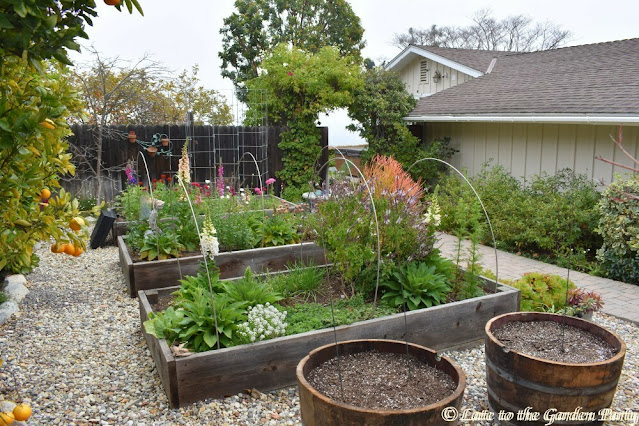 |
| By the time I converted the vegetable garden into a floral cutting garden, the plant's size was already beginning to concern me (Photo taken March 29, 2018) |
Several months after the photo taken in March 2018, I pruned the Euphorbia back to reduce its size for the first time.
 |
| Before and after shots are shown on the left and right respectively. The cuttings I left at the edge of the driveway for neighbors disappeared quickly. |
The pruned plant responded by growing taller and bushier. I've cut it back at least once a year since then but it's just gotten larger and larger. This year, it's flowering too.
 |
| Photo taken yesterday |
 |
| The tip of virtually every pencil stem bears a flower. I believe this is the first time it's flowered. |
I've already planted cuttings here and there throughout my garden over the years, some of which are also growing into beasts. A mature plant can reach 8-10 feet tall, which isn't something I want to see in my cutting garden. Much as I appreciate the plant's cheerful color, I think it's time for it to go. Another giveaway is pending.
In other news, we got rain as predicted on Monday, almost three-quarters of an inch in fact. It brought our seasonal total, calculated from October 1, 2021 (the official start of our "water year"), to 7.7 inches. That's not a lot, and it's well short of the 15 inches Los Angeles "normally" receives, but on the other hand, it's nearly twice the amount we received during the prior water year.
My 50 and 160 gallon rain tanks are full and my 265-gallon tank is three-quarters full. As the latter tank is fed by rain sheeting off the smallest roof surface, I collected overflow from the rain gutters and the rain chain in a plastic garbage can and plastic trugs, moving what I collected to the largest tank as those containers filled. New water use restrictions are pending as our local water supplier moves to "stage 2" of its Water Shortage Contingency Plan in response to an executive order from California's Governor requiring stricter conservation. The rainwater I've collected provides me a little flexibility in caring for my garden but the truth is that it won't last long. Our rainy season generally comes to an end in early April and, with the exception of a wayward tropical storm in summer, we won't see any more rain in Southern California until October at earliest.
All material © 2012-2022 by Kris Peterson for Late to the Garden Party












